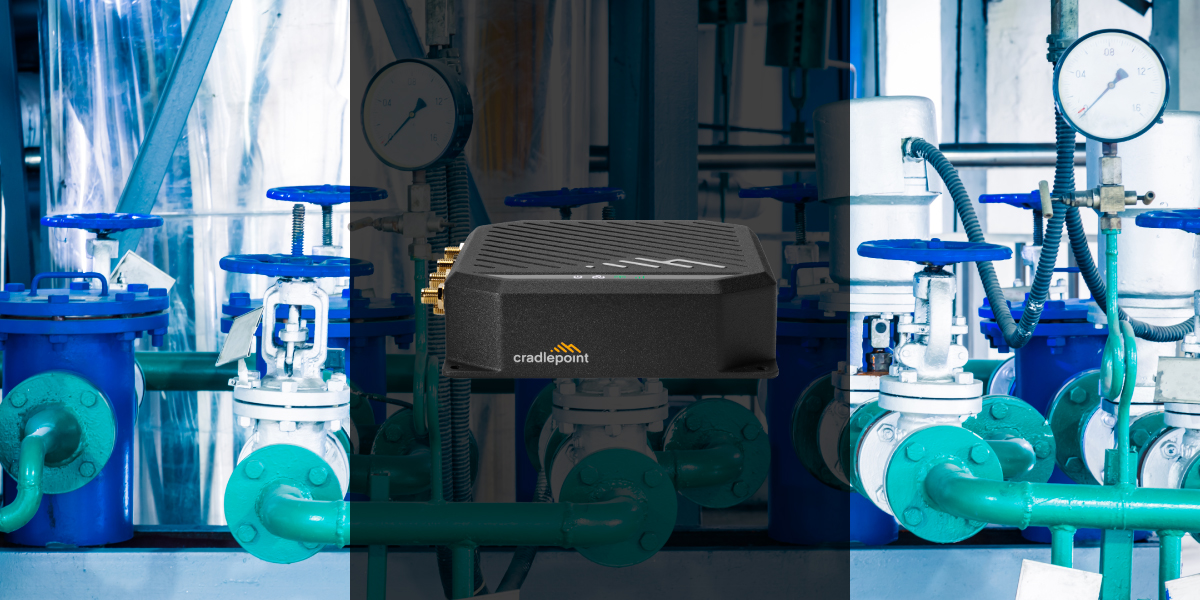Enhancing Water Utilities Management with IIoT Cellular Connectivity
The water and wastewater industry faces numerous challenges, including resource scarcity, urban population growth, environmental regulations, and process inefficiencies. However, adopting connected machines and devices through the Industrial Internet of Things (IIoT) is revolutionizing utility operations and enabling smarter decision-making.
In this article, we'll examine the benefits of IIoT in water and wastewater utilities, with a focus on energy efficiency, system optimization, cybersecurity, and improved maintenance practices, while also taking into consideration the security risks that must be addressed to protect against potential threats and ensure continuous service to the community.
Leveraging IIoT for Water Management

Energy Efficiency and Dynamic Monitoring
Leveraging IIoT technologies allows water utilities to reduce energy waste associated with traditional water processing and delivery methods by optimizing overall equipment effectiveness (OEE) and implementing energy-efficient practices, contributing to substantial energy reduction and improved operational efficiency. Incorporating smart sensors and real-time data collection from field devices and equipment allows for real-time system monitoring and analytics that enable dynamic adjustments, potentially leading to up to 25% energy savings. This addresses sustainability goals and helps manage fluctuating energy prices and comply with evolving legislation.
Similarly, by integrating IIoT with industrial wastewater management control systems, utilities can predict energy demand, optimize consumption patterns, and reduce maintenance costs. Intelligent Pumping, driven by IIoT, optimizes pump systems for energy savings, prolonged equipment lifetime, and reduced maintenance expenses.

Embracing Disruptive Technologies and Enabling Data-Driven Decision-Making
To navigate the fast-paced landscape of emerging technologies, utilities must identify viable solutions that offer tangible returns on investment. The IIoT applications in the water sector are gradually being piloted to unlock new value in asset management, reliability optimization, supply chain operations, and customer relationships. Integration of sensing, communication, SCADA, and analytics capabilities empowers utilities to capture real-time data at a lower cost, leading to enhanced field, system, and plant performance.
Similarly, they must design robust architectures that empower operators with real-time information through mobile devices, cloud connectivity, and data analytics. Smart sensors facilitate optimized asset management, ensuring the continuous flow of information from the field.
Tight integration between operational technology (OT) and informational technology (IT) allows for informed decision-making across the utility enterprise while maintaining a strong focus on cybersecurity.

Addressing Security and Reliability Concerns
As water utilities embrace wireless connectivity and remote monitoring enabled by IIoT, ensuring security and reliability becomes paramount since implementing IIoT cellular connectivity in water utilities presents a double-edged sword.
While it offers enormous benefits, it also exposes vulnerabilities that threat actors may exploit for malicious purposes. Threat actors may attempt to drain device batteries, override passwords and security measures, or exploit IIoT cellular devices as gateways to steal sensitive information. Specific types of attacks include denial of service (DoS) and distributed denial of service (DDoS) attacks, service DoS attacks, location tracking, functionality attacks, and data channel rerouting.
These security risks must be mitigated to ensure the system's integrity and protect against potential disruptions. By focusing on anomaly detection, secure wireless networking technology, and redesigned system architecture, utilities can mitigate cyber threats and maintain uninterrupted service delivery. Water utilities can also utilize a connectivity management platform that automatically monitors, detects, and alerts suspicious activities within the IIoT cellular network, while on-device SIM applets, which have security programs directly on SIM cards, can also enhance security.
The Cradlepoint S700 router with NetCloud Exchange provides enterprise customers with a comprehensive, zero-trust security solution that will safeguard their IoT infrastructure while streamlining deployment, simplifying management of security policies, and allowing fine-grained third-party access policies to be implemented.
About USAT
USAT specializes in designing and deploying fixed and mobile wireless data connectivity solutions for utilities of all kinds (oil, gas, electric, water, and wastewater) — complete with implementation, training, proof of concept (POC), system auditing, and on-site RF surveying services with optional engineering maintenance contracts.
Our team not only helps you select, provision, and activate devices, we make sure they work in practical applications and real-life situations.
For over 25 years, USAT has provided cellular networking solutions for public and private utilities across the USA. With our extensive catalog of world-class routers, gateways, and software designed for remote monitoring and management in even the harshest environments — you can count on us to get and keep you connected.
Reliable connectivity translates to less manual equipment maintenance, reduced downtime, and an overall increase in your business's ROI. Contact the experts at USAT to learn how our wireless networking solutions can help meet your organization's exacting needs.
Share this Post














